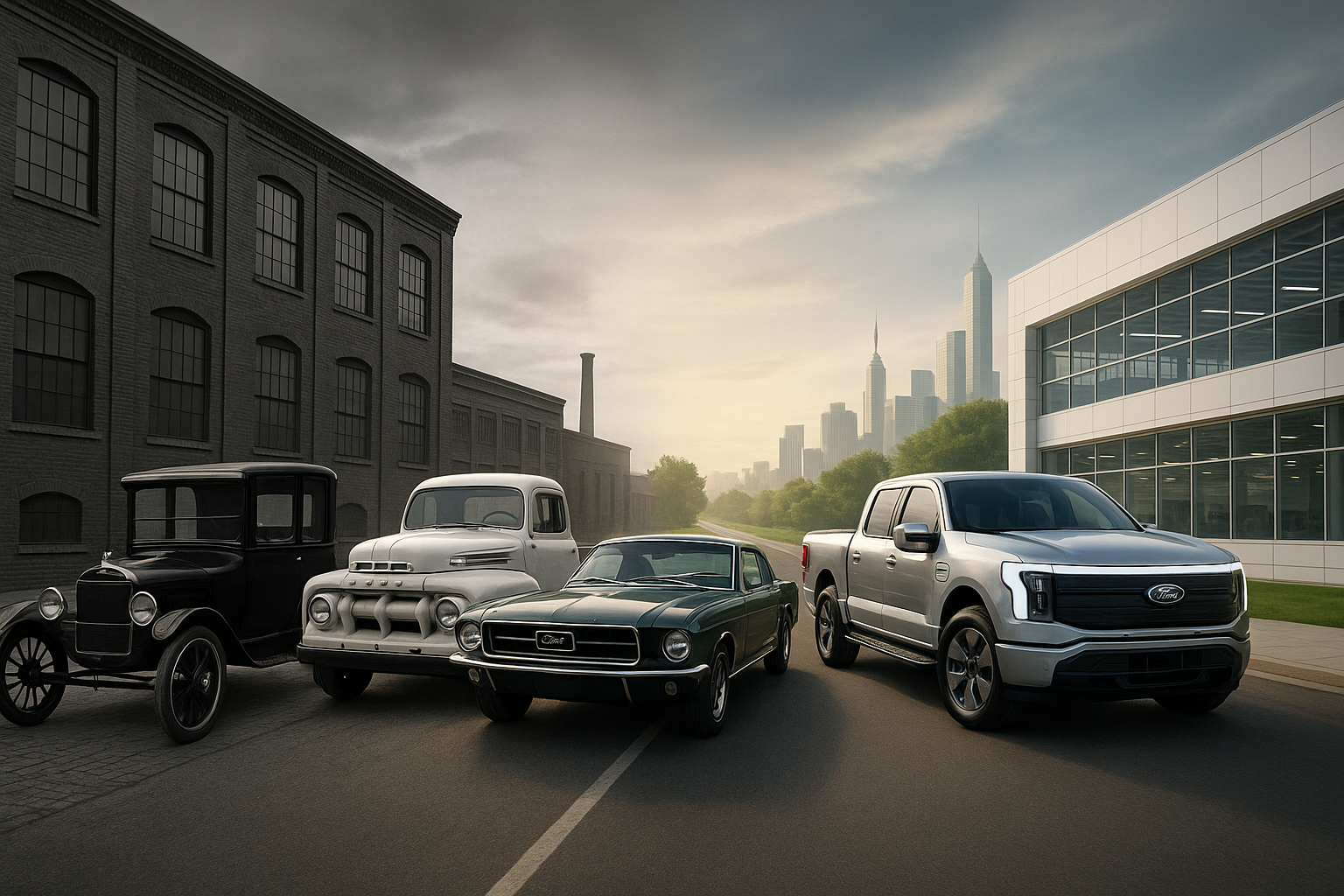
Ford Motor Company (NYSE:F), one of the world’s most iconic automotive brands, has not only shaped the way people move but has also continually reinvented itself across more than a century of operation. The journey from its humble beginnings in Detroit to its modern status as a leader in electric vehicle (EV) innovation is a testament to resilience, vision, and the power of industrial transformation. This article explores the company’s evolution, major milestones, and its current role in the fast-changing landscape of the global automotive market.
Founding Vision and Early Years
Ford Motor Company was founded in 1903 by Henry Ford, a visionary engineer and entrepreneur whose goal was to make automobiles affordable and accessible to the masses. The company’s initial assembly plant, located on Mack Avenue in Detroit, employed only a handful of workers. Ford’s focus on efficiency and standardization quickly paid dividends, culminating in the introduction of the legendary Model T in 1908.
The Model T was a groundbreaking product—not just for its design, but for the revolutionary production methods behind it. Ford implemented the moving assembly line in 1913, slashing vehicle assembly time from more than 12 hours to less than 2. This enabled mass production on an unprecedented scale and dramatically lowered costs, allowing Ford to reduce prices and put America on wheels.
Expansion and Global Reach
With the runaway success of the Model T, Ford rapidly expanded its operations. By the early 1920s, Ford factories spanned the globe, from the United Kingdom to Argentina and beyond. In the United States, the Rouge Complex in Dearborn became the largest integrated factory in the world, setting new standards for vertical integration and supply chain management.
Ford’s model of paying workers a generous wage for the era—famously, the $5 workday—helped create a robust middle class, further fueling demand for the company’s vehicles. The company’s focus on innovation didn’t stop at manufacturing. Ford also pioneered dealership networks and financial services, cementing its place at the center of American industry.
Surviving Economic Storms and Wars
The Great Depression tested Ford’s resolve, but the company survived by diversifying its product line and adopting new management strategies. During World War II, Ford converted many of its plants to produce military equipment, including aircraft, tanks, and engines, playing a crucial role in the Allied war effort.
Postwar America brought a boom in consumer demand, and Ford responded with models like the F-Series pickup—destined to become America’s best-selling truck. The 1950s and 1960s also saw the launch of iconic vehicles such as the Thunderbird and the Mustang, embedding Ford even deeper in American culture.
Facing Challenges in a Changing World
The late 20th century presented new challenges. Competition from international automakers, economic recessions, and shifting consumer preferences forced Ford to adapt. The oil crises of the 1970s, in particular, exposed vulnerabilities in the company’s reliance on larger vehicles, prompting investments in more fuel-efficient models and the exploration of new technologies.
The 1980s and 1990s saw Ford acquiring stakes in brands like Jaguar, Land Rover, and Volvo, aiming to diversify its global footprint. At the same time, the company launched successful models such as the Taurus and Explorer, responding to changing market dynamics.
Innovation and Reinvention in the 21st Century
The new millennium demanded further reinvention. Under the leadership of forward-thinking executives, Ford embarked on a sweeping turnaround strategy, restructuring its business, investing in quality improvements, and refocusing on core brands. This included selling off non-essential brands and returning attention to innovation.
The 2008 financial crisis hit the auto industry hard, but Ford stood out as the only major U.S. automaker to avoid government bankruptcy assistance. The company’s bold moves during this period—including raising capital, renegotiating labor contracts, and streamlining operations—set the stage for a renewed era of profitability and growth.
Accelerating into the Electric Age
Today, Ford stands at the forefront of the automotive industry’s electric revolution. The company has committed billions of dollars to developing electric and hybrid vehicles, with standout models like the Mustang Mach-E SUV and the all-electric F-150 Lightning pickup truck capturing headlines and winning consumer enthusiasm. These efforts position Ford alongside competitors such as General Motors (NYSE:GM) in the global race to electrify transportation.
Ford’s investment in advanced manufacturing, battery technology, and software platforms underscores its determination to lead the next chapter in mobility. The company is leveraging partnerships and new facilities to drive EV adoption, aiming for a substantial share of electric vehicle sales in the coming years.
A Legacy of Innovation and Endurance
The story of Ford Motor Company is one of continuous reinvention. From the Model T’s transformative impact to its ongoing push toward electrification, Ford has consistently demonstrated an ability to anticipate and shape the future of mobility. As the company accelerates its efforts in electric and connected vehicles, it remains a bellwether for the industry—and an enduring symbol of American ingenuity.
Disclaimer: This news article is for informational purposes only and does not constitute investment advice. Please consult a financial advisor before making investment decisions. The mention of any stock symbol is not a solicitation or endorsement to buy or sell securities.
